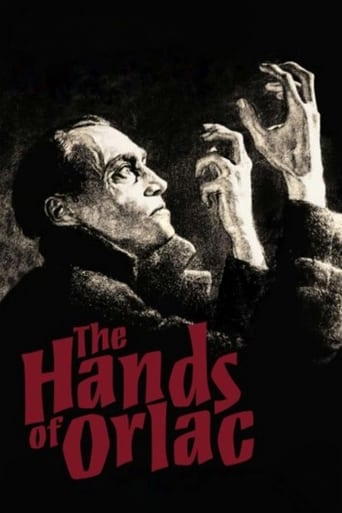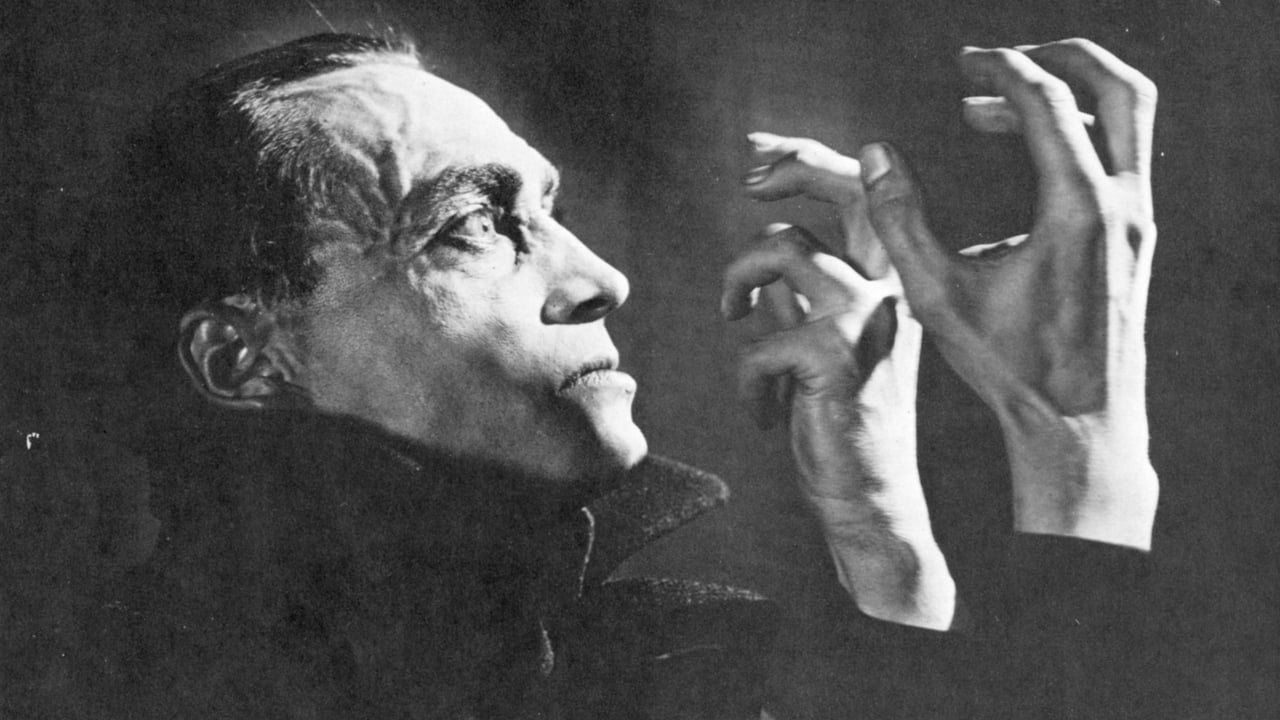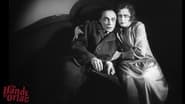Andrew Boone
It's always odd to me that, when discussing the directors of the German expressionist movement in cinema, Robert Wiene's name is generally omitted from the conversation. Of course, "The Cabinet of Dr. Caligari" specifically is often mentioned, but Wiene himself rarely is. Instead, the "big three" of German expressionist cinema — Fritz Lang, F.W. Murnau, and Georg Wilhelm Pabst — seem to get all the attention. The reason I say I find this odd is because, from what I've seen, Wiene is clearly the consummate expressionist among the group. Lang, Murnau, and Pabst were great filmmakers, but a lot of their work from the '20s isn't even expressionistic to begin with. One of Pabst's early films was a work of New Objectivity (an early movement in cinematic social realism -- or, in other words, the polar opposite of the formalistically inclined expressionist movement). Half of Lang's and Murnau's respective silent bodies of work could be considered non-expressionistic, and even their expressionistic work pales in comparison to the sheer psychological angst exhibited by films like "The Cabinet of Dr. Caligari" and "The Hands of Orlac", which embody the expressionist modus operandi far more fully than any film I've ever seen by Lang, Murnau, or Pabst. Wiene is simply the most unrelentingly expressionistic filmmaker I've seen from the silent era. "The Cabinet of Dr. Caligari", with its surrealistic painted backgrounds conveying a distorted, twisted German landscape — and, by extension, a distorted, twisted German mentality in the wake of World War I — was highly innovative for its time. "The Hands of Orlac", if possible, is even more expressionistic, although the overall aesthetic is different here than it was in Wiene's previous film. Firstly, there's no color tinting here. This was crucial to the film. Color tinting in general I think takes away from a film's artistic integrity, and here, especially, the stunning black-and-white cinematography would have been completely destroyed by the use of tinting. Truly, the cinematography is brilliant in "The Hands of Orlac", as much as I've seen in any film from the silent era. The atmosphere is so thick, the mood so dark, the style so Gothic, the tone of the film so heavy and bleak, that the film's aesthetic takes on an uncannily palpable texture. The lighting is fantastic. The use of darkness and shadows is a hallmark of expressionistic cinema, but never realized more masterfully than it is here. I was reminded very much of the film's of David Lynch, namely "Eraserhead", "Lost Highway", and "Inland Empire", films which refined the expressionist mode of cinema to its most viscerally and sensorily potent form. Unfortunately, the film's weakness is in the narrative. The mood and tone and atmosphere of the film are so amazingly brilliant that any elements of plot and story are secondary in priority, if not all together superfluous. But the film is based on a novel, and Wiene puts too much emphasis on realizing the narrative aspects of the source material. The actual action of the film is almost entirely redundant. Everything that needs to be said is said through the film's form, not its content, and yet too much attention is given to the content by the filmmaker. The ending of the film, specifically, is where it begins to lose traction. The film falls apart, to some extent, in the last twenty minutes or so, because it offers too much resolution. This is a flaw we see in virtually all German expressionist films, and in silent cinema in general from this time period. The medium of cinema was still in its childhood and hadn't yet learned important facets of the art of filmmaking such as subtlety, ambiguity, et cetera. Lynch's gift was his ability to take expressionism to the next level, by doing what Wiene was unable to do here, which is to apply on a content level, not just a formal one, the anxiety and fear and bleakness that define the expressionist movement. Formally, Wiene captures the essence of expressionism impeccably with this film, but where he falls short is in transposing this essence from the film's form to its content. This can be done in a multitude of ways. Lynch did it by denying his audience almost any resolution whatsoever to the narrative, leaving the viewer alienated and uncomfortable, and thus enhancing the visceral impact of the viewing experience.That, however, is my only criticism of the film, along with the fact that, at times, the acting is overwrought. The exaggerated gestures and histrionics are somewhat like the horror equivalent of what you'd see in an early D.W. Griffith short for Biograph. This is common in silent cinema, though, and overall the film has more than enough strengths to compensate for any shortcomings.If "The Hands of Orlac" is narratively flawed, it's flawed in the execution of that narrative, not in its premise, which has a strong thematic core revolving around notions of personal identity, manipulation, submission, and the psychology that drives human action. Where does the essence of our natures as individuals come from? It is physical or mental? Does it originate in the body or in the mind? Wiene's film, as well as presumably the source material that it's based on, seems to suggest the latter, and this is consistent with German expressionist cinema in general, which places a strong emphasis on the psychological (from the psychic powers of Lang's Dr. Mabuse villain, to Pabst's "Secrets of a Soul", the original film about psychoanalysis).Along with Murnau's "Faust" and "Sunrise: A Song of Two Humans", this may be the best German silent film of the thirty-plus I've seen. It's unique and it's formally brilliant by any and all standards. I recommend it to fans of German expressionism, of silent films in general, and of cinema of any kind.RATING: 7.67 out of 10 stars
anches-725-976306
Previous writers have covered the plot of this film pretty comprehensively. My copy is poor, visually, but has a score made up of preludes and fugues, trio sonatas and chorale preludes by J.S Bach played on the organ and including, in the confrontation between Orlac and "Vasser", the Toccata and Fugue in D minor (BWV565).This has no connection with the plot of the film, but makes for a decent recital in its own right. This copy, from English Language Video, is made up of the best bits of three prints from various sources with renewed intertitles. This means that the tale seems to lack logic and continuity, however, enough remains to hold the interest and to point up the films origins in the expressionist school. Veidt's portrayal of Orlac's descent into near insanity occasionally draws on Cesare,the somnambulist of "Dr. Caligari" but the story does not have the depth or psychology of the wider impressionist canon. In all, a curiosity but little else, even for fans of Conrad Veidt.
John W Chance
Flirting with a (then) science fictional theme of body part transplantation, the film explores the feelings of a concert pianist, who having lost his hands in a train wreck, receives a new pair of hands that belonged to an executed murderer. Austrian director Robert Weine, who created the landmark 'The Cabinet of Dr. Caligari' (1919) here reunites with and directs its star, Conrad Veidt, as the tormented pianist Paul Orlac.The camera focuses on Veidt's many moods and reactions to his plight -- his hands are not capable of his concert abilities, and he feels that they are taking him over with thoughts and deeds of crime and murder. He does an outstanding job, but too much of the film is slowly paced. From the beginning extended train crash rescue, on through scene after scene of Orlac's, his wife's and the maid's over the top Expressionistic gesturing, the scenes seem to go on too long. This slow pace is exaggerated by the lack of camera movement (everything is mostly wide shots with little tracking), the wonderfully and effectively spooky new musical score (on the KINO 2008 version), that sometimes lacks verve and variety, as well as the extensive time spent on the actors' Expressionist movements.The film certainly has its high points. It's great to see an entire film shot in shadows and low light, all with Gothic sets. This is great German Expressionism. If you can relax and just go with the pace of the film, you can really enjoy the acting of Conrad Veidt-- whose hands keep getting creepier and scarier.If it were cut to about sixty minutes to pick up the pace, it would be easier to enjoy and to see the great care that went into its creation and execution. I'll have to give it a six.
dorian_willems
I saw Orlacs Hände at the Ghent filmfestival this year with a live score. I must say I thought it was very good, although I didn't agree with the new score all the time... The story is both simple and ridiculous (like any good scare movie): A world renown pianist loses his hands in a trainaccident and gets a transplant from a convicted criminal. The hands of course take over or do they. This film does not excell in great acting or storytelling but more in the subtle building of an atmosphere that becomes so haunting that it nearly becomes unbearable. If you like horror movies from the silent age, without blood or gore but with loads of atmosphere, then this is an absolute must-see.


 AD
AD






